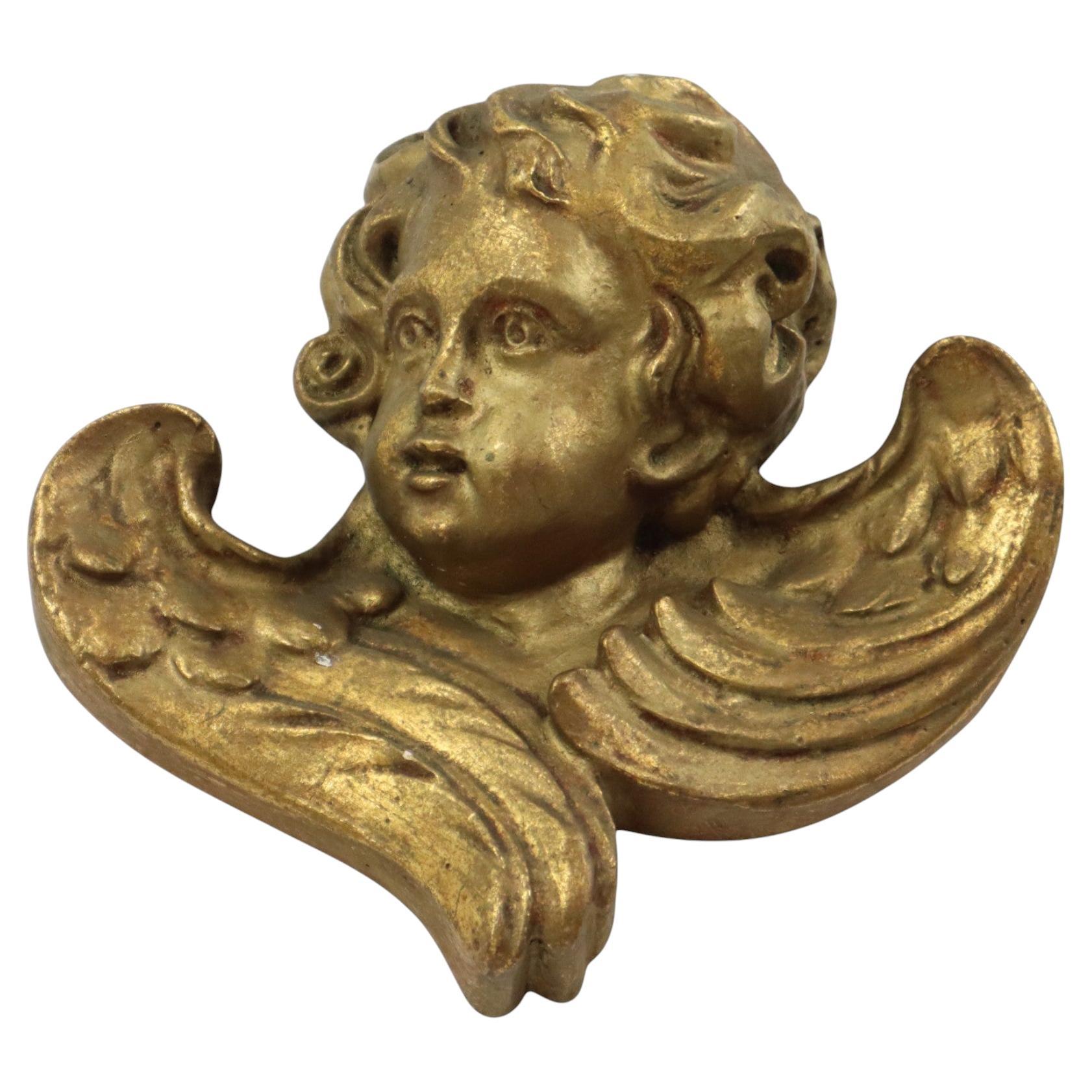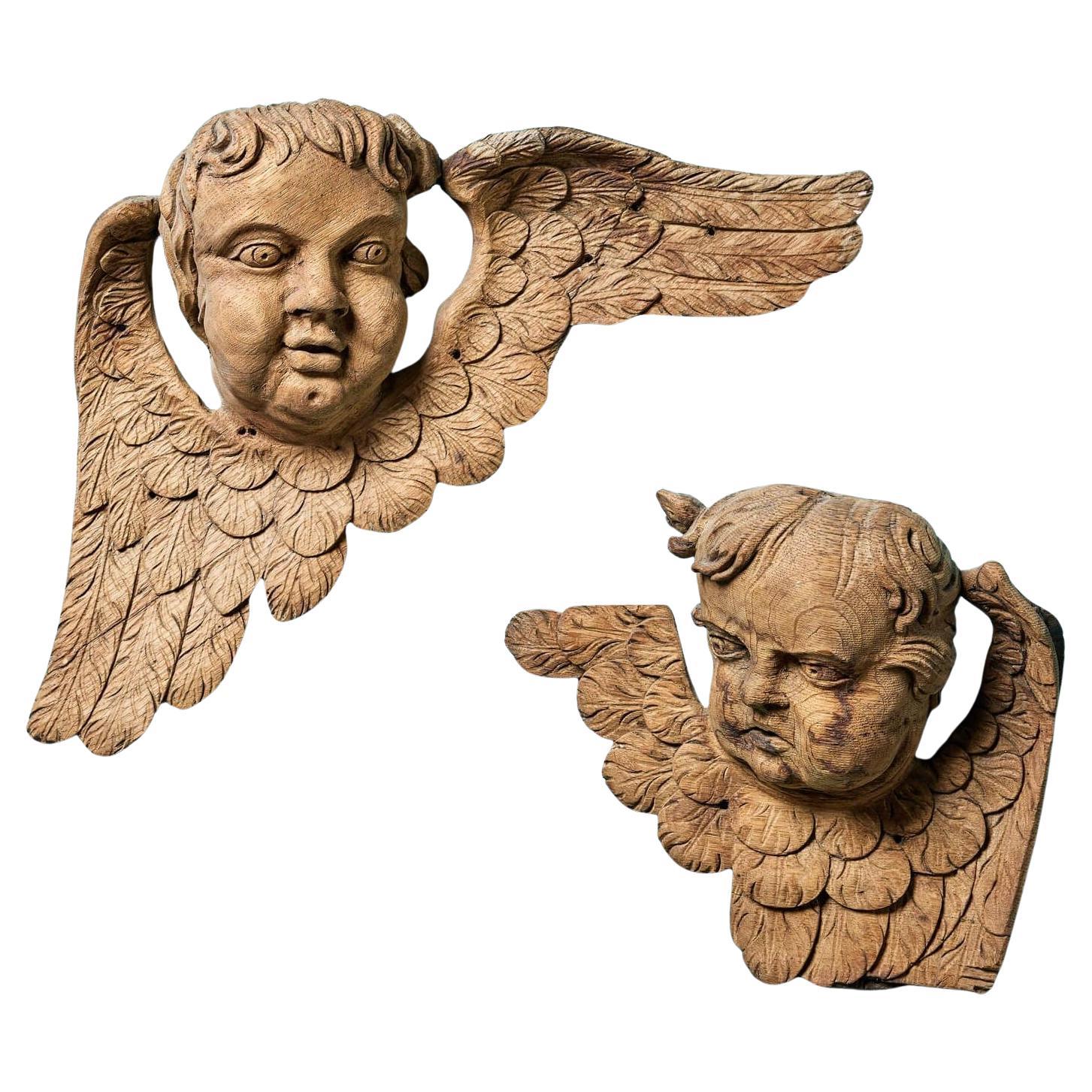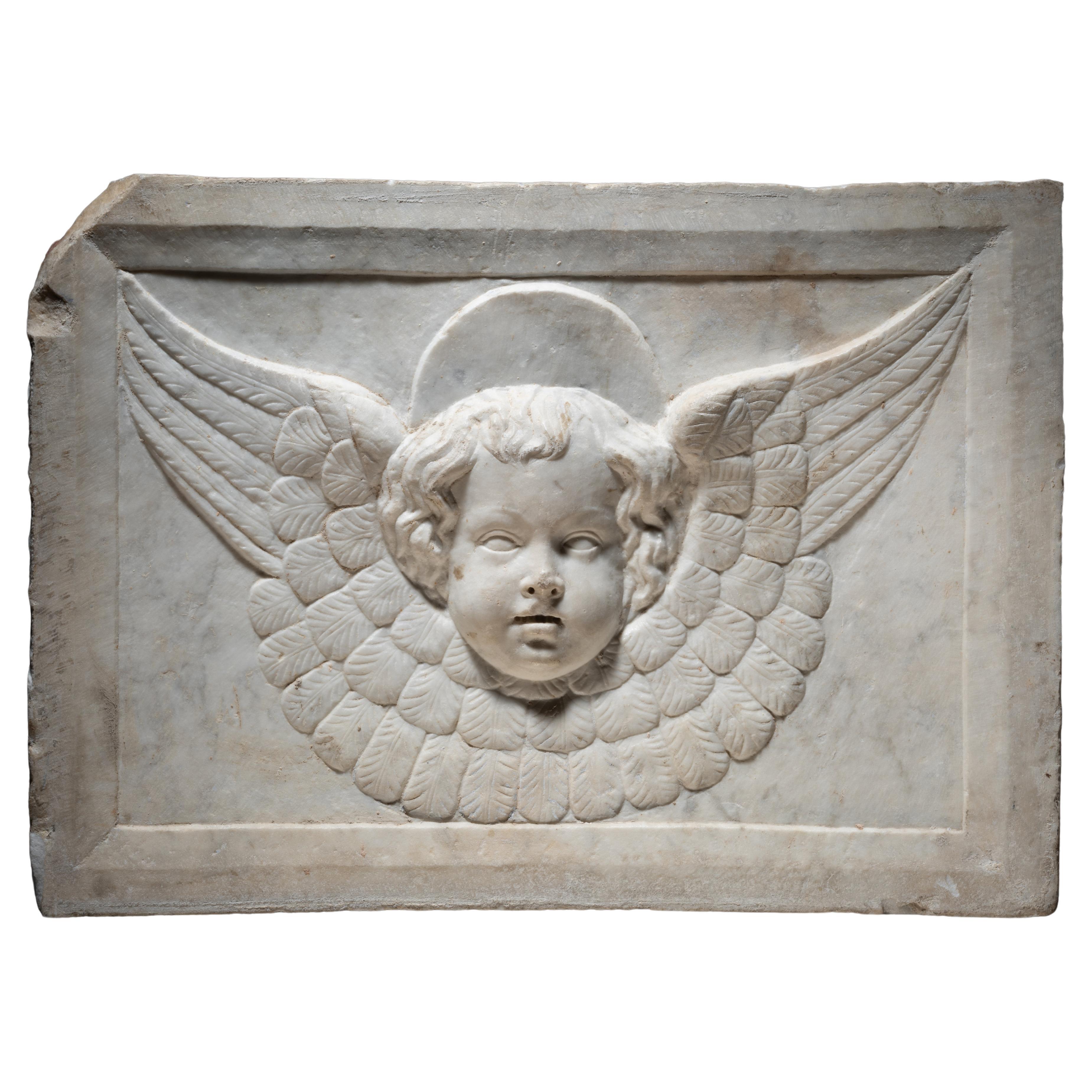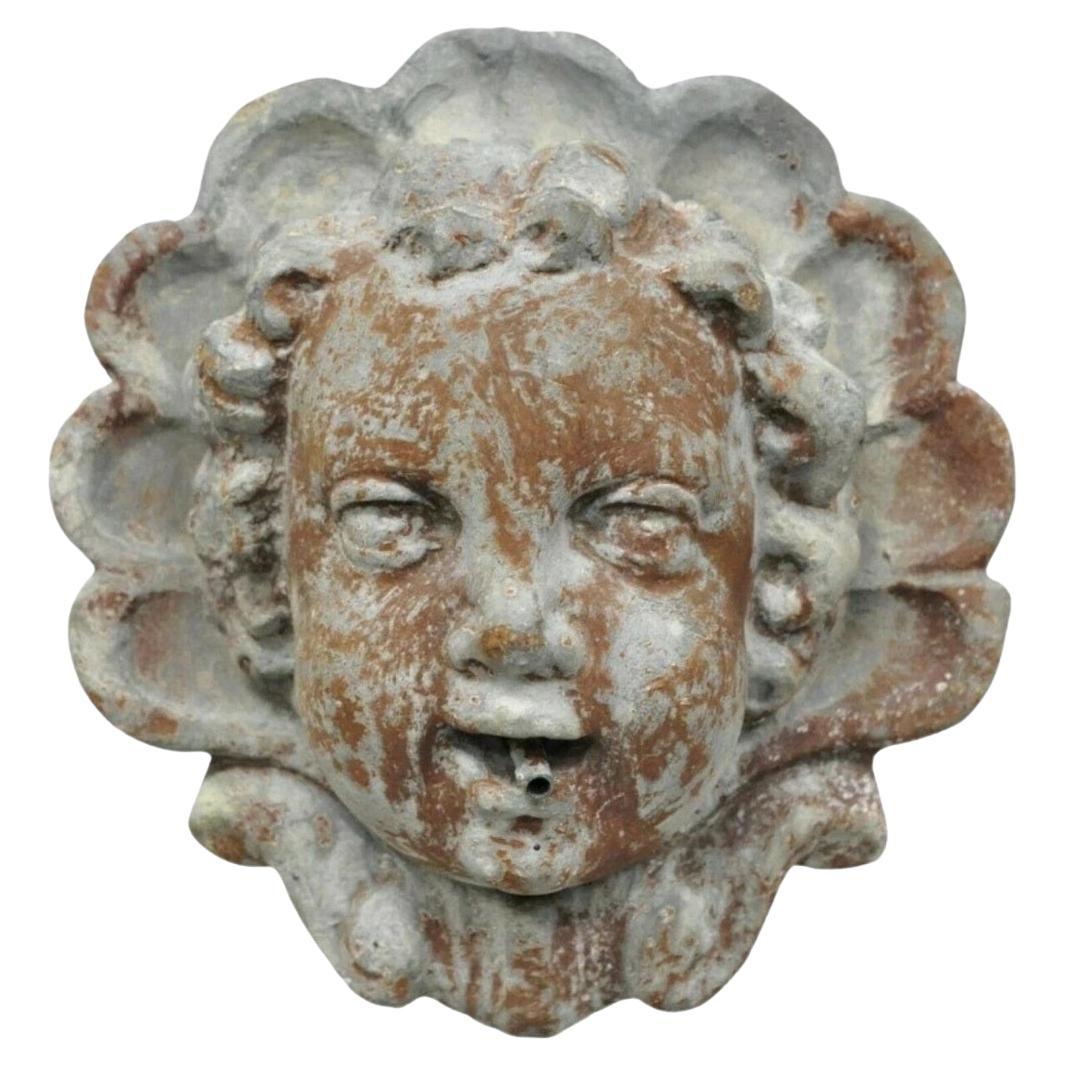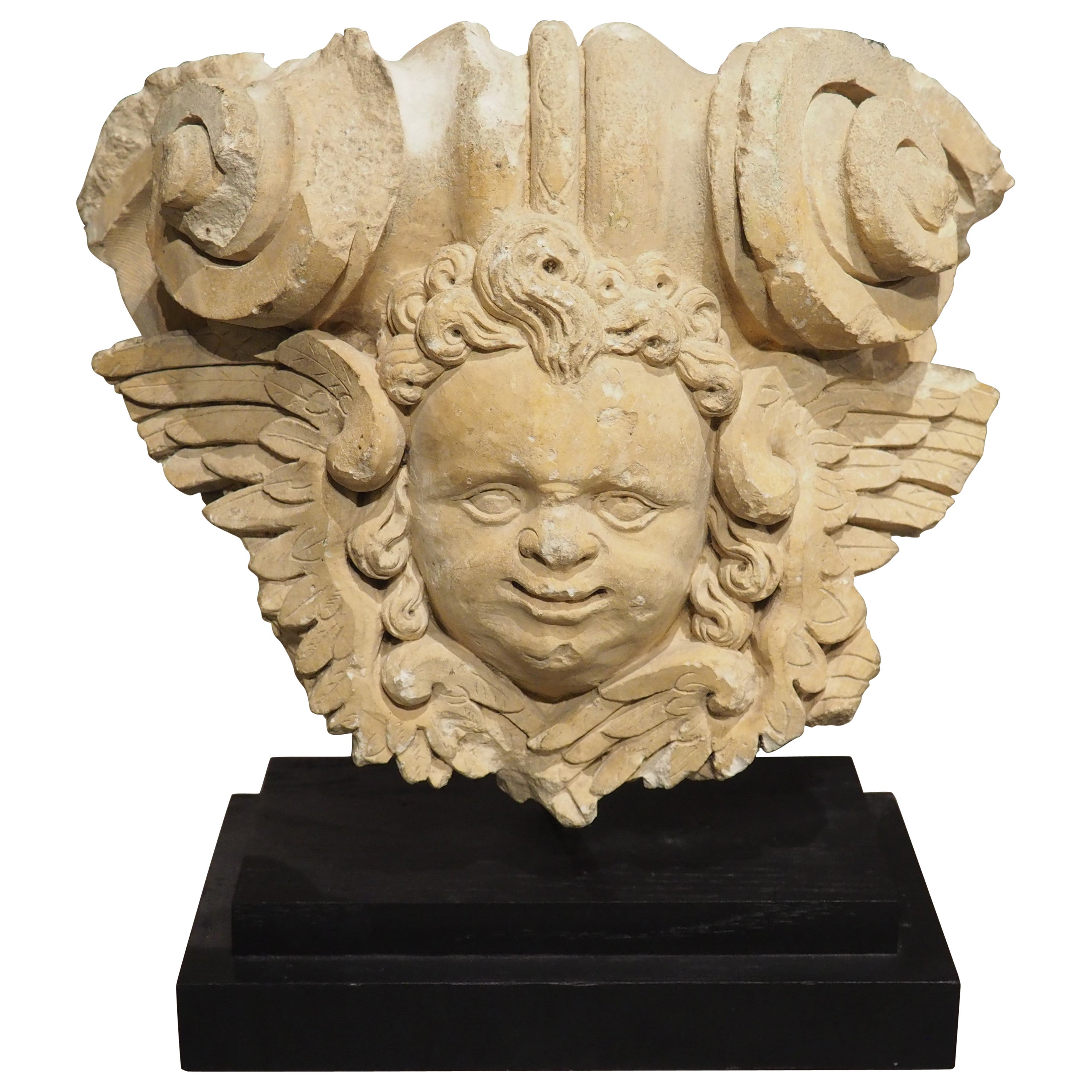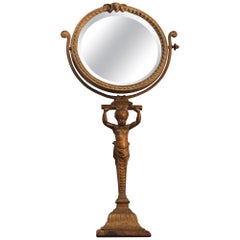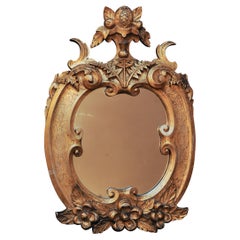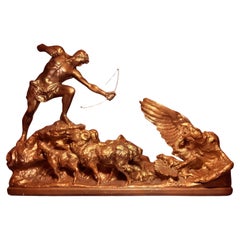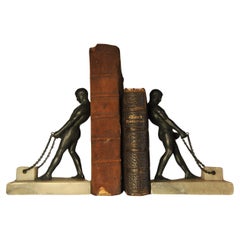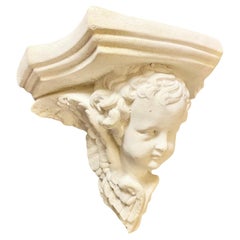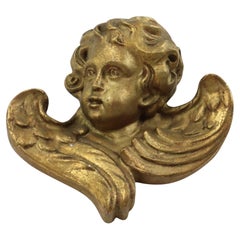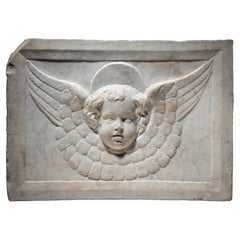Items Similar to Neoclassical Contemporary Design Wall Mounted Stone Cherub, Angel Sculpture
Want more images or videos?
Request additional images or videos from the seller
1 of 8
Neoclassical Contemporary Design Wall Mounted Stone Cherub, Angel Sculpture
$1,714.60
$3,810.2355% Off
£1,260
£2,80055% Off
€1,480.29
€3,289.5455% Off
CA$2,355.57
CA$5,234.6055% Off
A$2,629.77
A$5,843.9455% Off
CHF 1,377.96
CHF 3,062.1455% Off
MX$32,191.01
MX$71,535.5755% Off
NOK 17,500.13
NOK 38,889.1755% Off
SEK 16,500.40
SEK 36,667.5555% Off
DKK 11,047.56
DKK 24,550.1455% Off
Shipping
Retrieving quote...The 1stDibs Promise:
Authenticity Guarantee,
Money-Back Guarantee,
24-Hour Cancellation
About the Item
Unusual Decorative neoclassic Revival Putti/Cherub Stone Cast Sculpture With Metallic Wings, Wall Mountable.
Classicism is a specific genre of philosophy, expressing itself in literature, architecture, art, and music, which has Ancient Greek and Roman sources and an emphasis on society. It was particularly expressed in the neoclassicism of the Age of Enlightenment.
The court of Louis XIV was seen as the center of this form of classicism, with its references to the gods of Olympus as a symbolic prop for absolutism, its adherence to axiomatic and deductive reasoning, and its love of order and predictability.
This period sought the revival of classical art forms, including Greek drama and music.
The Renaissance also explicitly returned to architectural models and techniques associated with Greek and Roman antiquity, including the golden rectangle as a key proportion for buildings, the classical orders of columns, as well as a host of ornament and detail associated with Greek and Roman architecture. They also began reviving plastic arts such as bronze casting for sculpture, and used the classical naturalism as the foundation of drawing, painting and sculpture.
- Dimensions:Height: 14.18 in (36 cm)Width: 20.67 in (52.5 cm)Depth: 7.88 in (20 cm)
- Style:Neoclassical Revival (In the Style Of)
- Materials and Techniques:
- Place of Origin:
- Period:
- Date of Manufacture:2000s
- Condition:Wear consistent with age and use.
- Seller Location:Reading, GB
- Reference Number:Seller: KF ***** stop31stDibs: LU8232233281182
About the Seller
5.0
Platinum Seller
Premium sellers with a 4.7+ rating and 24-hour response times
Established in 2016
1stDibs seller since 2023
130 sales on 1stDibs
Typical response time: 1 hour
- ShippingRetrieving quote...Shipping from: Reading, United Kingdom
- Return Policy
Authenticity Guarantee
In the unlikely event there’s an issue with an item’s authenticity, contact us within 1 year for a full refund. DetailsMoney-Back Guarantee
If your item is not as described, is damaged in transit, or does not arrive, contact us within 7 days for a full refund. Details24-Hour Cancellation
You have a 24-hour grace period in which to reconsider your purchase, with no questions asked.Vetted Professional Sellers
Our world-class sellers must adhere to strict standards for service and quality, maintaining the integrity of our listings.Price-Match Guarantee
If you find that a seller listed the same item for a lower price elsewhere, we’ll match it.Trusted Global Delivery
Our best-in-class carrier network provides specialized shipping options worldwide, including custom delivery.More From This Seller
View AllA Rare Regency Cherubic Brass Revolving Vanity Mirror
Located in Reading, Berkshire
A Rare Regency Brass Revolving Bevelled Edge Vanity Mirror With Darted Frame & Decorative Cherub Column.
Category
Antique 1810s British Regency Table Mirrors
Materials
Brass
$1,837 Sale Price
25% Off
19th Century Baroque Carved Gilt Wood Wall Mirror Carved With Fruit Pediment
Located in Reading, Berkshire
19th Century Baroque Carved Gilt Wood Wall Mirror Carved With Fruit Pediment & Scrolls.
Mirror would be suited to both an opulent interior or a neutral one seeking a splash of luxury.
Category
Antique 19th Century British Baroque Wall Mirrors
Materials
Wood, Giltwood
A. Amorgasti Sculptor 1936 Bronze Gilded Plaster of An Ancient Greek Hunt Scene
By Antonio Amorgasti 1
Located in Reading, Berkshire
A. Amorgasti Sculptor 1936 Bronze Gilded Plaster of An Ancient Greek Hunt Scene
"Acadmia"
A beautiful bronze gilded plaster sculpture depicting an ancient Greek hunt scene of a shepherd and an eagle.
The Shepherd is depicted as protecting his sheep from the eagle.
The plaster has been signed and dated 1936.
About the Sculptor - We find different ways of writing for his name, such as Antonio...
Category
Early 20th Century Belgian Art Deco Figurative Sculptures
Materials
Plaster
A Rare Pair 19th Century Italian Grand Tour Bronze Greco Male Figurine Bookends
Located in Reading, Berkshire
A Stunning and Unusual Pair of Matching Grand Tour Bronze Spelter Greek Male Figurines on Alabaster Bases.
The Grand Tour was the principally 17th- to early 19th-century custom of a...
Category
Antique Mid-19th Century Italian Grand Tour Bookends
Materials
Alabaster, Bronze, Spelter
$2,163 Sale Price / set
25% Off
19th Century French Gilt Gesso Rococo Filigree Decorative over Mantel Mirror
Located in Reading, Berkshire
Beautiful Antique 19th century French Gilt Gesso Rococo Filigree Decorative Over Mantel Mirror With Ho Ho Bird Surmount.
.
Category
Antique 19th Century French Rococo Wall Mirrors
Materials
Glass, Mirror, Wood
$10,001 Sale Price
25% Off
A Napoleon III Decorative Wall Mirror With Intricate Floral & Scroll Motifs
Located in Reading, Berkshire
A Napoleon III Decorative Wall Mirror With Floral and Scroll Motifs With Original Patinated Bevelled Mirror Glass
Central mirror height is 27cm
This is a beautiful example of a 1...
Category
Antique 19th Century French Napoleon III Mantel Mirrors and Fireplace Mi...
Materials
Glass, Mirror
You May Also Like
A Vintage French Plaster Neoclassical Style Cherub Angel Wall Bracket
Located in New Orleans, LA
A diminutive vintage 1960s French cast stone wall bracket in the form of a Cherub Angel having a shaped three layer shelf in the neoclassical style.
Just the right touch for that sm...
Category
Vintage 1960s French Neoclassical Wall Brackets
Materials
Cast Stone
$176 Sale Price
20% Off
Vintage Angel Cherub Head Bust Gilded Plaster Wall Decoration 20cm
Located in Poperinge, BE
Beautiful vintage head, bust of an angel or cherub in relief, made of gilded plaster, circa mid-20th century.
Charming and elegant wall decoration, the cherub looks very sweet, shap...
Category
Mid-20th Century European Baroque Wall-mounted Sculptures
Materials
Plaster
Pair of Antique Neoclassical Carved Cherubs
Located in Wormelow, Herefordshire
A striking and competently carved pair of antique neoclassical carved cherubs.
Crafted in oak, these neoclassical sculptures depict detailed handcarved faces of cherubs or putto sup...
Category
Antique Mid-19th Century Italian Baroque Wall-mounted Sculptures
Materials
Wood, Oak
Cercle of Jacopo della Pila - Marble relief depicting a winged Cherub
Located in Bruxelles, BE
Cercle of Jacopo della Pila (Lombard, in Naples 1471-1502)
Marble relief depicting a winged Cherub
Naples, second half of15th century
40 x 57 x 12 cm
Exquisitely carved, this relief portrays a winged cherub with cascading hair and delicate features. The cherub's plump, smooth countenance, rounded cheeks, outlined lips, and finely drawn nose emanate a sense of tenderness. The quadrangular module, is adorned with a carved frame. The relief ascends gradually, transitioning from the low relief of the wings to the high relief of the head.
The rectangular frame and the subtly curved form of the artwork suggest that the relief likely adorned the upper part of an arch or a vaulted chapel. The type is that of the perspective room with a coffered ceiling decorated with figures of winged cherubs, which is found in various Neapolitan chapels of the 15th century. Coffered ceilings attest to the recovery of antiquity and the search for luxury in Renaissance architecture, first in Florence, then in Rome and Naples. The majority of the numerous family chapels and tombs built during the late fifteenth century in south of Italy employ the new formal vocabulary of the Florentine Renaissance in a self-confident manner that permitted a broad spectrum of variations.
The escalating admiration for the classical world, coupled with the development of perspective, significantly contributed to the Renaissance endorsement of coffered ceilings. This artistic and constructive device drew inspiration from the intricate marble patterns observed in historical landmarks such as the Arch of Titus, the Temple of Vesta in Tivoli, the Pantheon, and the Basilica of Maxentius. A distilled product of both mathematical and artistic cultures, deeply scrutinizing the ancient world, the coffered ceiling plays a vital role in the perspective construction of space with its regular and directional geometry. The motif of the coffered ceiling decorated with cherubs in relief was introduced in Naples by Francesco Laurana in the plastic decoration of the Arch of Castelnuovo. Laurana's impact on the art scene in the south of Italy was profound. The introduction of the winged cherub into the region's artistic vocabulary bridged the gap between the classical and the contemporary, creating a synthesis that resonated with both aesthetic and spiritual sensibilities. His influence extended beyond the immediate visual appeal, shaping the cultural identity of the Renaissance in southern Italy. Although the plastic decoration of the Arch of Castelnuovo cannot certainly be ascribed to a mature Renaissance style, it was precisely on this occasion that the sculptors who worked there could get to know and export throughout the Italian peninsula that type of "Florentine classicism" which, even in the 15th century Naples, was conditioned by the Burgundian culture imported into the Kingdom by Alfonso of Aragon himself, with artists called from Spain and Northern Europe. The coffered ceiling, with its geometric patterns and Laurana's winged cherubs nestled within, became a symbol of refinement and cultural sophistication. The relief sculptures, carefully integrated into the overall design, transformed the ceiling into a celestial realm, inviting viewers to contemplate the divine while immersed in the grandeur of the Renaissance space.
Similar winged cherubs appears also in the Naples cathedral. Within the renowned Succorpo Chapel, a mesmerizing marble coffered ceiling adorned with cherubs epitomizes the splendor of the Neapolitan Renaissance. The interplay of light and shadow on the textured surface of the marble coffered ceiling introduces an ethereal dimension, providing an immersive visual experience for observers. The geometric precision and the repeated patterns, reminiscent of classical motifs, establish a sense of harmony and balance that has become the hallmark of the Neapolitan interpretation of Florentine Renaissance aesthetics.
Although probably intended to be admired from a distance, this cherub is intricately detailed and exquisitely rendered: the face and hair are elegantly outlined and the feathers are textured through juxtaposed lines. The marble, both figurative and decorative, adheres to the principles of balance and restrained ornamentation typical of the « Florentine Classicism ». Harmonious shapes and gracefully orchestrated curves , rooted in the classical repertoire, converge to evoke a sense of ethereal beauty. The surface displays the masterful use of a chisel to intricately carve the feathers and facial features, creating an almost abstract quality.
This work is a testament to a sculptor of great skill and rich figurative knowledge, seamlessly blending classical firmness in contours with a refined treatment of the marble's surface. The combination of tradition and innovation point to a stylistic idiom from Lombardy, in particular we can find some comparaisons with the works of Jacopo della Pila, sculptor of Lombard origin working in Naples in the second half of the 15th century. He is documented there between 1471 and 1502, and is a protagonist of the Aragon Renaissance in the second half of the Quattrocento, together with the other great Northern sculptor active in the kingdom, Domenico Gagini.
the first commission he received dates back to August 9, 1471, when Jacopo publicly committed to sculpting the funerary monument of Archbishop Nicola Piscicelli to be placed in the Cathedral of Salerno. The last known work is an altar ordered on July 29, 1502, by the noble Jacopo Rocco for the church of San Lorenzo Maggiore in Naples. Between these two chronological extremes (1471-1502), we must place the fervent activity of the artist, who had trained in Rome, perhaps under the guidance of Paolo Romano but also engaged in dialogue with other major artists of the city, especially Isaia da Pisa. He enriched his experience in Naples, initially drawing inspiration from the works of Domenico Gagini and later from the Tuscan masterpieces of Antonio Rossellino and Benedetto da Maiano destined for the church of Santa Maria di Monteoliveto. Jacopo della Pila's artistic personality is thus based on a complex interplay of influences, contributing to the definition of a highly personal style.
Close comparaison can be made between our cherub and the winged angels reliefs...
Category
Antique 15th Century and Earlier Italian Renaissance Figurative Sculptures
Materials
Marble
$22,683 Sale Price
20% Off
Antique French Neoclassical Small Lead Cherub Head Garden Wall Fountain
Located in Philadelphia, PA
Antique French Neoclassical Small Lead Cherub Head Garden Wall Fountain. Item features a nicely cast lead form, wonderful detail and patina, approx. 10 lbs. Circa Early 20th Century....
Category
Early 20th Century Unknown Neoclassical Fountains
Materials
Lead
A 17th Century Mounted French Limestone Carving of a Winged Angel
Located in Dallas, TX
Originally part of a larger architectural from a French building in the 1600s, this hand-carved limestone fragment of a winged angel has been mounted more recently to a painted black...
Category
Antique 17th Century French Baroque Figurative Sculptures
Materials
Stone, Limestone, Metal
More Ways To Browse
Angel Putti Sculptures
Cast Stone Angel
Jere Musical
Jere Piano
Louise Farnsworth
Mailbox Wall Mount
Metal Horse Heads
Mounted Sailfish
Pair Terra Cotta Wall Sculpture
Ron Schmidt On Sale
Set Puigdemont
Threshing Board
Valeria Nascimento
Vintage Brass Eagle Wall Plaque
William Bowie Tree
Wood And Stone Threshing Board
Barbara Barron Textile
Barclays Bank Eagle

